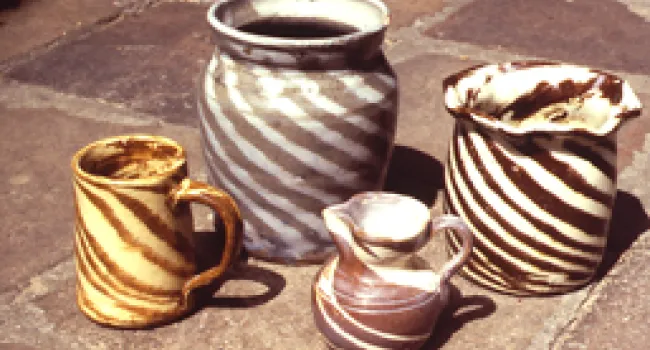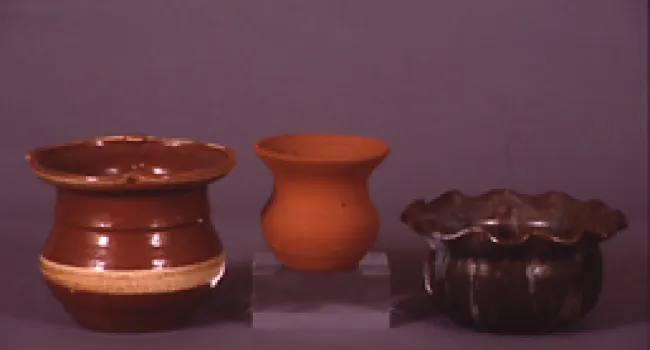North Carolina

Alkaline glazing was well received in the Catawba Valley of North Carolina. By the early 1980s, only a few potters turned traditional ware in the area. Burlon Craig, one of the most traditional potters in the South, first turned pots at a local pottery in the1920s. By the mid-1940s, Craig established his own pottery. He would later train Boyd Hilton, whose family tradition began in the early 1900s. More than six hundred potters worked in North Carolina, but in 1981 about twenty traditional potteries were in operation. Two of these, in Skyland and Arden, were run by the Brown family of Georgia.
The most prolific pottery region is in the eastern Piedmont generally known as the Seagrove District. Early Seagrove potters produced lead-glazed earthenware, eventually changing to stoneware with salt-based glazes. As demand for practical wares declined, most potteries closed in the 1920s. Through the efforts of Jacques and Juliana Busbee, Jugtown Pottery opened in 1921. Marketing the work of local potters to tourists and collectors, they initiated a pottery revival that has grown to well over 125 potteries in the area today. Many are run by well regarded names like Owen, Craven, and Cole.

